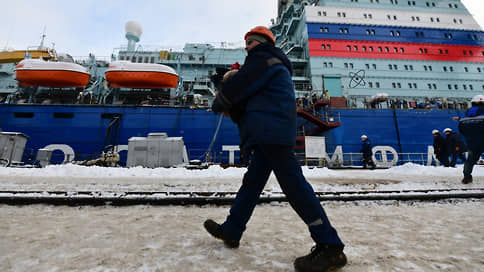Northern sea satellites of billions – Newspaper Kommersant No. 141 (7342) of 08/05/2022
[ad_1]

The government will send 151 billion rubles. from the state budget for the creation of space satellites for safe navigation along the Northern Sea Route. According to the plan, by 2024 two Arktika-M satellites for weather monitoring, two Kondor-FKA satellites and one Obzor-R satellite for radar imaging of the water area will be in orbit. The expansion of the satellite constellation is critical, analysts say: Russian companies, due to sanctions, cannot order Earth remote sensing data and ship identification systems from foreign firms.
The government plans to allocate 150.72 billion rubles from the budget. for the creation of an Arctic satellite constellation for the safety of navigation along the Northern Sea Route (NSR). The money will be allocated until 2031 for the construction and launch of devices for weather monitoring and radar imaging of the water area, follows from the published plan for the development of the NSR. Supervises this part of the Roskosmos program (they did not promptly answer Kommersant there).
The launch of satellites is necessary for Russian shippers, since, due to sanctions, they can no longer order satellite images from foreign firms. There are not enough publicly available images, and they rarely cover complex sections of the NSR, Evgeny Abrosimov, Deputy Chairman of NOVATEK, said at the end of July. They didn’t respond to Kommersant’s request.
The length of the Northern Sea Route is 5.6 thousand km. According to government plans, the transportation of goods along the route will increase from 35 million tons in 2021 to 80 million tons by 2024 and up to 220 million tons by 2035.
According to the government’s plan, by the end of 2026, all four satellites of the Express-RV communication system will go into orbit to provide Internet access. 33.8 billion rubles are provided for the construction and launch of devices. until 2024. It is planned to spend 50.39 billion rubles on the creation and launch of five highly elliptical devices Arktika-M for weather monitoring. until 2031. These satellites will conduct round-the-clock all-weather monitoring of the Earth’s surface and the seas of the Arctic Ocean. The grouping should include at least two Arktika-M vehicles: the first was put into orbit at the beginning of 2021, the second is planned to be launched in 2023. For remote sensing of the NSR water area, it is planned to create and launch six all-weather radar surveillance satellites.
These will be four Condor-FKA and two Obzor-R devices. Two Kondor-FKAs are planned to be put into orbit by the end of 2024, and two more by the end of 2031. The first Obzor-R will begin operation by the end of 2024, the second by the end of 2030. In total, it is planned to allocate 60.15 billion rubles for the creation of these systems. Roskosmos will provide “interested customers” with Earth remote sensing data, including free of charge. It is planned to allocate 6.81 billion rubles for these purposes, the plan says.
Year-round safe operation of the NSR requires the availability of up-to-date Earth remote sensing (ERS) data, automatic ship identification systems (AIS) and reliable channels for their delivery.
Until recently, satellite AIS services were provided by American companies, it is no longer possible to obtain this data officially, says Nikolay Pozhidaev, president of the Sitronics Group. Without radar remote sensing, it is impossible to obtain the current ice situation, but this information is also not available in the Russian Federation: foreign data providers have broken distribution agreements with Russian companies. Nikolai Pozhidaev notes that Sitronics Group plans to create its own AIS constellation of 70 satellites by 2025, and is also working on a radar remote sensing constellation.
“In the light of recent events, we need to talk not only about the replacement of foreign hardware or software, but also about the import substitution of space data. One of the quickest ways is Russian private satellite constellations, which by the 2030s can be expanded with state apparatuses, ”says Mr. Pozhidayev.
Now Russia is critically behind the United States and China in terms of the size and quality of the constellation of satellites in orbit, and under sanctions, the lag will inevitably increase, says Mikhail Burmistrov, head of Infoline-Analytics. He suggests that it is expedient for Russia to discuss partnership projects with China on the use of satellites.
[ad_2]
Source link





